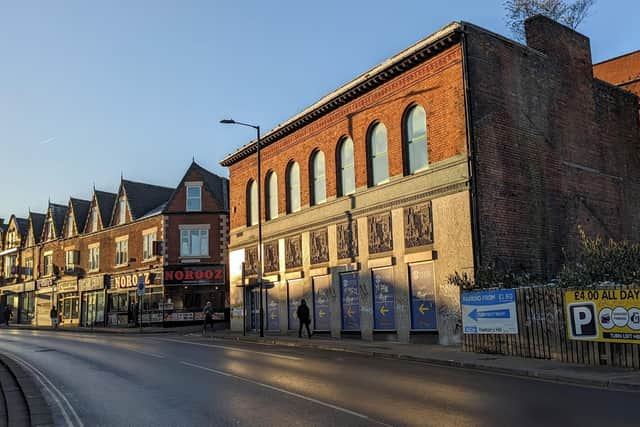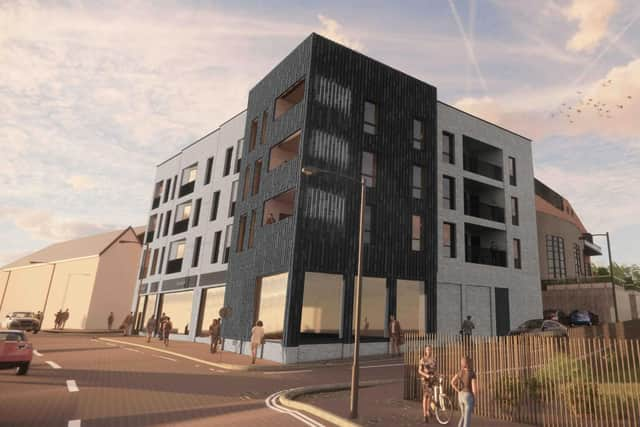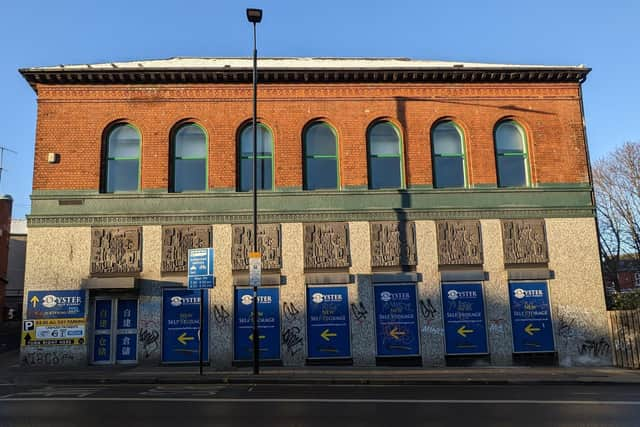Sheffield heritage campaigners fight to save Victorian coffee house from demolition
and live on Freeview channel 276
Hallamshire Historic Buildings, the Victorian Society and 37 individuals have objected to plans to replace the three-storey building on the corner of London Road and Broom Close with shops and 59 apartments.
The three-storey building was originally Highfield Cocoa and Coffee House, built in 1877 by Sir Frederick Thorpe Mappin for working-class men to use instead of pubs.
Advertisement
Hide AdAdvertisement
Hide AdThe plan includes the three-storey building, vacant offices behind that and the site of The Tramway pub, which was demolished in 2015. A five-storey building would replace the coffee house and Tramway site with ground-floor retail space and 22 apartments above and the offices would be turned into 37 apartments with parking and landscaping.


Spring Planning Ltd submitted a report on behalf of applicants Keeton’s Management Services Ltd to Sheffield City Council’s planning department. It states: “The existing building is in a poor state of repair and it would simply not be viable to reinstate the building.”
The report says the structure would need to be strengthened, the basement is prone to flooding and there is a risk of asbestos.
‘Architectural merit’
Nick Roscoe of Hallamshire Historic Buildings said: “Mappin’s Coffee House is a building with architectural merit in a prominent position that helps define the character of the area. The proposed designs are out of keeping and would overwhelm the neighbouring Victorian shop fronts. We have seen no evidence in the planning application to justify claims that the building cannot be successfully refurbished.


Advertisement
Hide AdAdvertisement
Hide Ad“The risk is we see a great building replaced by one that will only help to destroy the character of London Road. A lot more could be made of London Road in the future but it is going to be vital that new developments respect the good quality buildings we have. ”
The Highfield Cocoa and Coffee House opened its doors to much fanfare in 1877, with Frederick Mappin having put forward £4,500 to establish what was the first of its kind in Sheffield, said Nick. Based on similar cocoa houses in Liverpool, the business was considered an ‘experiment’ in Sheffield.
The idea was that working people could enjoy similar pleasures to ‘gentleman’s clubs’ without the influence of alcohol or expensive membership fees.


“We really hope the owners will think again,” Nick said. “The history behind the building makes it an important local heritage asset. The original use would certainly be popular now but it wasn’t just a coffee house.
Advertisement
Hide AdAdvertisement
Hide Ad“There were billiards tables and other games upstairs, two reading rooms with newspapers and magazines and a big ‘cocoa and coffee’ shop selling affordable non-alcoholic drinks downstairs.
‘Giving something back’
“Mappin was already a rich man when he put forward the money for this – for him it was about giving something back and improving working people’s lives.”
Sir Frederick ran family cutlery firm Mappin Bros, moving to Mappin and Webb, and in 1855 became the city’s youngest Master Cutler. He was also involved in steel firm Turton.
He became an MP and helped set up the University of Sheffield. He is commemorated in the university’s Mappin Hall and Mappin Art Gallery at Weston Park Museum.
Advertisement
Hide AdAdvertisement
Hide AdMore about Hallamshire Historic Buildings’ campaign can be found at their website, hhbs.org.uk
